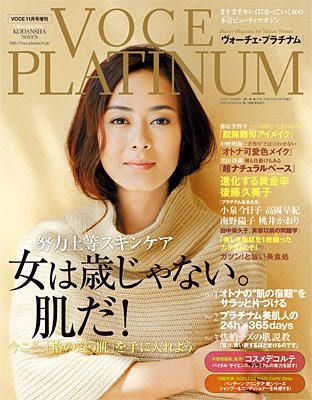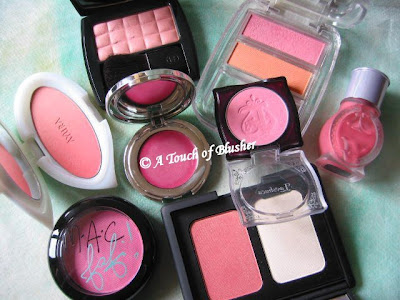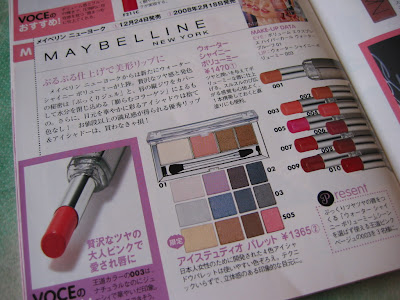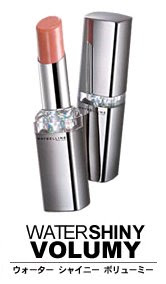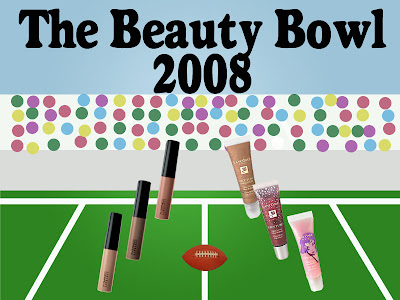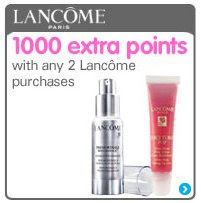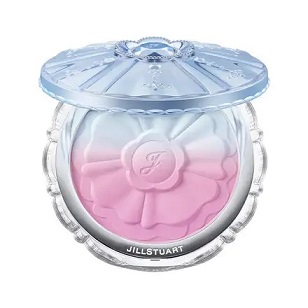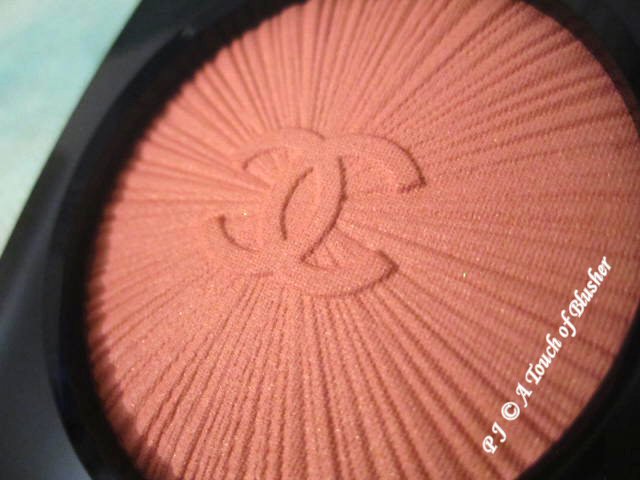
(Kosé Sekkisei, one of the best-selling
whitening line in Japan ever)
(image from www.kose.co.jp)

(Shiseido Haku 2, a recent sensation)
(image from www.shiseido.co.jp)
Last week, one of my readers asked me to write about whitening products in Japanese cosmetics. Since a friend of mine in the US also asked me about them a while ago, I decided that it was the time to highlight them on my blog.
I need to say at the onset that there is a reason why I have not talked about them, and it is that most of them simply don’t live up to their claims. Despite that, there are various aspects of this major Japanese skincare “phenomenon” that I would like to present, so this will be an extended post.
First of all, just to be clear, whitening products sold in Japan and some other Asian countries are not skin-bleaching products, the sales of which are illegal in many countries around the world. If the mechanisms of whitening products do work, what they do is to bring the coloration of the skin back to the tan-less state.
Most major Japanese cosmetics brands have a fully-fledged whitening line, with products from cleansers to foundations. The most established brands even have several different whitening lines. For example, Shiseido has UVWhite, White Lucent, and the recently very successful Haku (seen above).

(Shiseido UVWhite)
(image from www.shiseido.co.jp)
Many major western cosmetics lines also have Asia-exclusive whitening lines:
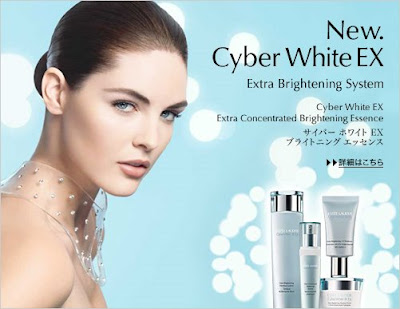
(Estee Lauder Cyber White EX)
(www.esteelauder.co.jp)
(Lancôme Blanc Expert Neurowhite X³)
(image from www.lancome.jp)
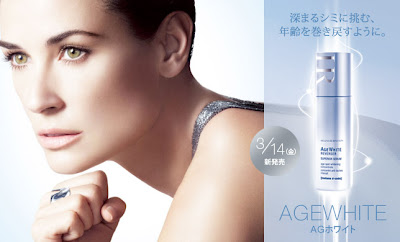
(Helena Rubinstein Agewhite Reverser)
(image from www.helenarubinstein.jp)
One key thing to bear in mind is that, in Japanese cosmetics, “whitening” and “brightening” are usually two facets of one skincare concept. In the most general terms, whitening products incorporate melanin inhibitors and exfoliating agents to attempt to fulfill their promises. While melanin inhibitors are supposed to slow down the production of melanin and, as an indirect result, help the existing tan to fade faster, the exfoliating agents clear out the dead skin cells so the skin looks smoother and more even and therefore appears brighter and “whiter”.
With this concept as the basis, many Japanese and western cosmetics brands have a full whitening skincare and base makeup range. Typical items include:
Makeup remover & face wash: They are designed to deep cleanse the skin and get rid of dead skin cells.
Toner: It often has exfoliating agents like fruit acids and more than a fair amount of alcohol to help strip off the dead skin cells.
Serum: It is usually billed as the key item of a whitening line and is supposed to have the highest concentration of melanin inhibitors and, in some cases, exfoliating agents. Counter assistants usually recommend the serum if one wants to venture into whitening skincare products but doesn’t want to invest in the whole line.
Mask: More melanin inhibitors and exfoliating agents.
Nighttime moisturizer: More melanin inhibitors and exfoliating agents.
Daytime moisturizer: It usually has a high SPF (around 30 or more) and PA level. (PA indicates the level of UVA protection, ranging from PA+ to PA++++.) It usually also incorporates micro light-reflective particles to give an illusion of brightness and luminosity.
Concealers/ foundations: Again, high SPF and PA as well as a lot of light-reflective particles.
A more elaborate whitening line usually includes items like:
Wipe-off lotion: It is used right after cleansing (and before toning) to further strip the dead skin cells off the skin. It is used on a cotton pad and applied in a wiping (not patting) motion.
Massage cream: Used right after cleansing (and after the wipe-off lotion), it attempts to boost blood circulation and to combat dullness in order to achieve a brighter complexion.
Eye cream: It is specifically for the eye area and is not necessarily targeted at getting rid of dark circles.
So, do they actually work?
In most cases, quite unlikely. The reason why they don’t usually work is very similar to why self-proclaimed anti-aging skincare products don’t usually work. Whitening products exist mainly because customers want to be told that they can achieve what they want to achieve. This is exactly how anti-aging products market themselves. (Almost coincidentally, wearing a sunscreen happens to be the simple answer to both anti-aging and whitening…)
Also, in Japanese cosmetics, whitening products are by far the most frequently revamped products. (A complete new line or new additions to an existing line are usually brought out at this time of year because the weather is about to get warmer and sunnier and people start to get more concerned about sun exposure.) With most brands, the whitening range gets revamped (to various extents) every year or every other year. Most companies want customers to believe that the whitening technology is improving, but, in almost all cases, products are not delivering the goods, so new ones need to be brought out, with new pseudo-scientific claims and new glowing results from non-independent research.
Plus, I rarely hear people missing a certain whitening product when it is discontinued and replaced by a new version. That alone is quite telling.
On a personal level, for a couple of years quite some time ago (when I was avidly experimenting with all kinds of skincare products), some of the whitening products that I tried are the harshest skincare products that I have ever used. Many Japanese toners and moisturizers already have a lot of alcohol (which simply should be avoided in any skincare product), and whitening toners and moisturizers sometimes have even more. (Despite its popularity, Kosé’s Sekkisei is perhaps one of the most skin-irritating products I have ever tried, as it is heavily loaded with alcohol.) Judging by the ingredient lists of many current whitening products, it seems that nothing has changed.
(To be fair, I am sure there are a few whitening products that are a little more gentle. Out of the several that I bought during that time, only the whitening serum by Sofina was something I remotely liked. It was free from alcohol and exfoliating agents. What it achieved was simply a more even complexion, but so can any well-formulated moisturizer.)
On a related note, every year, the names of a brand’s whitening line and individual whitening products incorporate such blatantly suggestive terms, so much so that I find them almost amusing.
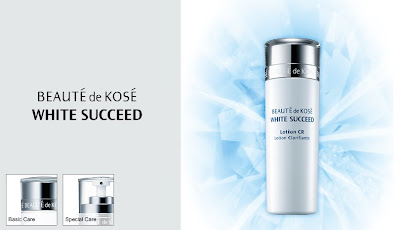
(Beauté de Kosé White Succeed)
(image from www.kose.co.jp)
Here are just some of the names (of current and previous whitening lines) to show how some cosmetics companies desperately want to convince customers that their products are the answer to everything:
Helena Rubinstein: Premium White (2006), Divine White (2007), Age White (2008)
Guerlain: Perfect White
Givenchy: Doctor White
Estee Lauder: Cyber White
Lancôme: Blanc Expert NeuroWhite
Clinique: Active White (2005), Derma White (current)
Cosme Decorte: Whitelogist
Pola: White Shot Melano Shooter
SKII: Whitening Source Derm-Revival
Dior: DiorSnow Sublissime
Origins: Light Years Ahead
Currently, the Kanebo website is building up to the grand launch of their latest whitening serum. The name:
Whitening Conclusion
I can’t help but wonder what they will name their new whitening product in 2009. I am extremely curious…
(On a minor note, as you might have observed, a lot of ads for whitening products feature blue as the predominant accent color. In Japanese culture, blue denotes purity, lucidity, and transparency and goes well with the idea of whitening products.)
However, there is still a lesson to be learned from this whole whitening phenomenon in Japan, which doesn’t involve whitening products themselves. Because many Japanese people strive to have a milky and porcelain-white complexion, they tend to be very diligent and almost religious about applying sunscreens.
So, even though their long and winding road to a perfect/premium/divine/active/cyber white complexion might be never-ending, at least they are keeping their skin optimally protected against the harmful and aging UV rays and maintaining a healthy and youthful appearance of their skin.
Related Posts:
A Touch of Blusher‘s Anti-Aging Series
Sunscreen Basics
10 Golden Skincare Rules

